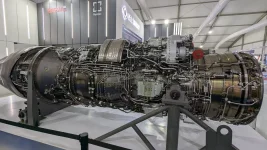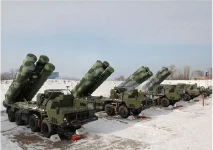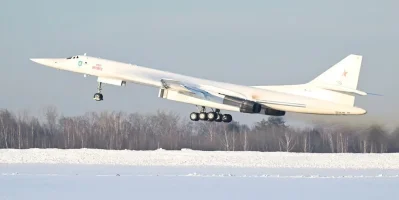- Views: 982
- Replies: 2
India and Russia are in talks on the construction of ice-class vessels that can carry cargo on the Northern Sea Route, said a senior official of Vladimir Panov, Special Representative for Arctic Development at Russia’s integrated atomic power major Rosatom State Corporation. He also said Russia is considering cooperation in the field of crew training for advanced vessels and supports the signing of a bilateral memorandum in this area. “Cooperation with India on the Northern Sea Route is carried out within the framework of the intergovernmental format – the Russian-Indian Working Group on Cooperation in the Northern Sea Route under the Intergovernmental Russian-Indian Commission on Trade, Economic, Scientific, Technical and Cultural Cooperation.
The first meeting of the Working Group took place on October 10, 2024, in New Delhi,” Panov told this writer. According to Panov, the main goal of the joint work is to increase the volume of cargo traffic along the Northern Sea Route between Russia and India. “To achieve this, modern Arctic-class vessels capable of year-round navigation on the NSR (Northern Sea Route) are required, including new high ice-class container ships.
It is proposed to build them as part of joint innovative projects. One of the topics discussed with the Indian side within the framework of the Working Group is the construction of ice-class vessels,” Panov added. Already Indian Southern city Chennai is connected to Russia’s Vladivostok, a key port on the Northern Sea Route. There is a good volume of cargo flow from Russia to India. It is also said Chennai can be the cargo aggregation point for containerised traffic to Russia as a minimum of 100 containers per week is required for a dedicated service between Chennai Port and Vladivostok. It is expected the Northern Sea Route infrastructure will figure in the talks with India during Russian President Vladimir Putin’s visit to India.
The Northern Sea Route is the shortest shipping route connecting the western part of Eurasia and the Asia-Pacific region. In 2018, the Russian government appointed Rosatom the infrastructure operator of this sea route. Rosatom oversees the federal project Development of the Northern Sea Route and participates in the implementation of the Northern Sea Route development plan until 2035 and the initiative for the socio-economic development of the Russian Federation until 2030 Year-Round Northern Sea Route, approved by the order of the Government of the Russian Federation.
One of Rosatom’s strategic goals is to make this sea route an effective shipping artery connecting Europe, Russia and the Asia-Pacific region. Be that as it may, Panov said the cargo traffic on the Northern Sea Route is on the increase with 37.9 million tons carried in 2024 which was 4.5 percent higher than that of the 2023 figure. “Domestic transit grew by almost 50 percent, reaching 3.1 million tons due to shipments from Russian investment projects in the Arctic to the Asia-Pacific markets. From January to September 2025, the cargo volume transported via the Northern Sea Route amounted to around 23 million tons,” he said.
According to him, there is enormous interest in international transit along the Northern Sea Route. Containerised cargoes have begun moving along the route. “During the summer-autumn navigation season (which is still ongoing), 14 voyages have already taken place, transporting 276,000 tons. This is 56 percent more than the total shipments for the entire last year 176,000 tons. Currently, another three voyages are underway in the NSR waters,” Panov remarked. In 2024, during the summer-autumn navigation season, 14 international container voyages were carried out between the ports of Northwest Russia and the ports of the People’s Republic of China (PRC).
This is twice as many as in 2023. For the first time, cargo was delivered from Shanghai via the Northern Sea Route to the Republic of Belarus. According to Panov, the traffic on this sea route is now two way from and to Russia. “During this year’s navigation, Chinese and Russian container carriers and fleet operators plan to organise more than 20 voyages between Chinese ports and Russian ports – Arkhangelsk, Murmansk, and St. Petersburg,” Panov said. Dry/loose/liquid bulk, general cargo, containerised cargo, and northern cargo essential goods for supporting the livelihoods of northern regions are being moved on this sea route.
As the route will be frozen, ice breakers are needed to make it navigable for ships and Russia is adding nuclear icebreakers to its fleet. Rosatom’s Director General Alexey Likhachev had earlier said there is a need for 15-17 ice breakers from the current 11 to carry about 100 ton cargo on the Northern Sea Route. Panov said at present, 11 icebreakers are operating on the Northern Sea Route: 8 nuclear-powered and 3 non-nuclear. “Construction continues on three universal nuclear icebreakers of Project 22220 (vessels that can operate in deep Arctic ocean and shallow river deltas) and on the universal nuclear icebreaker Rossiya, whose capacity will be twice that of the Project 22220 icebreakers, the newest series in Russia’s nuclear fleet. To ensure the planned cargo traffic, further expansion of the icebreaker group will be required. This matter is under consideration. The specific timelines for their construction and commissioning will depend on the pace of cargo traffic growth,” Panov said.
The Arctic is a unique region both in terms of ecology, climate, natural diversity and the richness of its subsoil, said Panov and added that utmost care is taken on environmental protection. Conservation of ecosystems in the Arctic region is one of Russia’s most important tasks. The key points of Russia’s presence in the Arctic are environmental security and intensification of development of the Far North. The development of the Arctic is closely tied to the growth of the Northern Sea Route, Rosatom said. When implementing projects in the Arctic, the guiding principle is “do no harm”, that is, minimising pollutant emissions into the atmosphere, reduction of emissions into water bodies, and reduction of production waste.
Rosatom is taking additional measures to protect the environment. These include, restoring disturbed land, conserving biodiversity, and carefully assessing the potential environmental impacts of our projects prior to the project implementation. An important step to ensure environmental safety in the Arctic was Rosatom’s implementation of a Northern Sea Route comprehensive environmental monitoring program that I worked out in collaboration with the Marine Research Center of M.V. Lomonosov Moscow State University. This project started in 2021 and continues through 2025. A key condition for the sustainable development of shipping along the Northern Sea Route is its compliance not only with Russian, but also with international environmental standards and best environmental practices.
An international expert group of experts on environmental monitoring of the Northern Sea Route was established, which became an international forum for discussing the concept and implementation of the project. On the challenges faced in increasing the traffic on the sea route Panov said, “The Northern Sea Route is a relatively new shipping lane that passes through challenging and sparsely developed Arctic regions. Its development requires systemic efforts to create modern infrastructure and ensure year-round navigation. In 2022, the Development Plan for the Northern Sea Route up to 2035 was approved, outlining measures in four key areas: development of the cargo base, transport infrastructure, icebreaker and cargo fleets, and navigation safety.” Apart from the construction of new ice breakers, new port infrastructure and energy facilities are being developed. Thanks to these efforts, the Northern Sea Route is progressing steadily and systematically, Panov said.
Ice breakers apart, cargo vessels are needed to carry goods on the sea route and when asked about it Panov said, “A total of 30 high Arctic-class vessels are currently operating in the waters of the Northern Sea Route. These are not ordinary ships but so-called double action ships. Their distinguishing feature is that in ice conditions they move stern-first (back side of the ship), while in open water they turn around and proceed bow-first (front side of the ship). This design ensures a balance between high icebreaking capability and high speed in open waters.”



